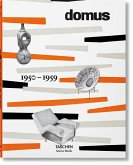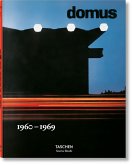At the dawn of the 20th century, Bruno Paul (1874-1968) stood likea colossus astride the landscape of an emerging Modernism. Asan illustrator, architect and educator his influence was unequalled.Arguably the most important German designer of his generation,his work was ubiquitous in the technical and professional publicationsof his day. For five decades, Paul's reputation was unparalleledamong progressive German artists. As a young man he wasa member of the Munich avant-garde responsible for the creationof the Jugendstil. As a designer of furniture and interiors, heachieved a commercial success unmatched by his illustrious contemporaries.In the light of his professional accomplishments, hewas the most influential German architect of his generation, a figureof international significance. Ludwig Mies van der Rohe, AdolfMeyer and Kem Weber were among his students, and their workdeveloped from the practices of his atelier. Indeed, as director ofthe Vereinigte Staatsschulen für freie und angewandte Kunst inBerlin he presided over an institution that rivaled the Bauhaus asa center of progressive instruction in the arts.Despite the renown he enjoyed at the height of his career, Paul'sname has been largely absent from the standard histories of themodern movement. Indeed, this book is the first comprehensivestudy of his life and work. Nevertheless, Paul's story embodies asignificant facet of the history of 20th-century design: the developmentof Modernism in Central Europe and its coalescence fromthe influences of Jugendstil, Elementarism, Classicism, Expressionismand Functionalism. Paul played a prominent role in this coalescence,and he deserves a place of honor in the history of the modernmovement. Yet his biography also encompasses a less familiar,but no less significant, aspect of the history of modern design. Itis the story of a pragmatic Modernism that occupied a middleground between avant-garde experimentation and conservativeprofessional practice, a Modernism that was timeless, practicaland principled. It was this pragmatic Modernism that won thepatronage of the middle classes and established progressivedesign as an accepted alternative, and eventually as the preferredalternative to the period styles. Moreover Paul's pragmatic Modernism,and its underlying principles, remain as relevant todayas when they were first conceived.William Owen Harrod is a graduate of the Massachusetts Instituteof Technology and the University of Texas at Austin, where hereceived his doctorate in architectural history. He is a practicingarchitect, theoretician and historian, based in Austin, Texas.
Hinweis: Dieser Artikel kann nur an eine deutsche Lieferadresse ausgeliefert werden.
Hinweis: Dieser Artikel kann nur an eine deutsche Lieferadresse ausgeliefert werden.








